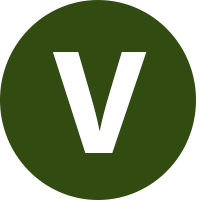Back
Credit Verification Code: 226
Technical Paper
Stormwater Management
Talking Trash
Wednesday, February 16, 2022
11:30 AM – 12:30 PM
Location: Virtual
Credit: 1 PDH
Presentation Level: Beginner
.jpg)
Phillip Taylor, CPSWQ
Technical Product Manager
Hydro International
Portland, Maine, United States
Paper Presenter(s)
In collaboration with the City of South Portland, the Cumberland County Soil and Water Conservation District (CCSWCD), this long term study has been collecting and analyzing trash since 2016. The source area is the 90 acre Maine Mall in South Portland Maine. Long Creek runs adjacent to the mall and receives stormwater runoff directly from the mall.
As the trash from the study area is collected, each bag is numbered and weighed on the hanging scale. One out of every three to five bags is selected for trash sorting further for analysis. The trash is sorted into several broad categories for detailed measurement including: Food Service Packaging, Snacks and Candy, Plastic Film and Grocery Bags, Paper, Bottles and Cans, Polystyrene, and Other. These seven categories are a condensed list based on the City of Los Angeles and the Friends of the LA River study conducted in 2012 and 2013. Sorting trash can be a somewhat subjective task as some categories overlap and many items can be difficult to identify. In general, a decision tree flow chart is used during the sorting process for ease and consistency.
The results of the study have assisted the City of Portland develop trash management plans including the implementation of a plastic bag tax. What is interesting is that trash seems to reach a steady state in the urban stream environment. That is to say, that at any one time a visual inspection may only show a apparent constant level of trash, neither decreasing or increasing. However when a long term study is done that load is not going away, it is being transformed into ether smaller particles, buried, or transported to other locations downstream, and being replaced with new trash. Much like an iceberg, what you see is only the tip of the problem.
As the trash from the study area is collected, each bag is numbered and weighed on the hanging scale. One out of every three to five bags is selected for trash sorting further for analysis. The trash is sorted into several broad categories for detailed measurement including: Food Service Packaging, Snacks and Candy, Plastic Film and Grocery Bags, Paper, Bottles and Cans, Polystyrene, and Other. These seven categories are a condensed list based on the City of Los Angeles and the Friends of the LA River study conducted in 2012 and 2013. Sorting trash can be a somewhat subjective task as some categories overlap and many items can be difficult to identify. In general, a decision tree flow chart is used during the sorting process for ease and consistency.
The results of the study have assisted the City of Portland develop trash management plans including the implementation of a plastic bag tax. What is interesting is that trash seems to reach a steady state in the urban stream environment. That is to say, that at any one time a visual inspection may only show a apparent constant level of trash, neither decreasing or increasing. However when a long term study is done that load is not going away, it is being transformed into ether smaller particles, buried, or transported to other locations downstream, and being replaced with new trash. Much like an iceberg, what you see is only the tip of the problem.
Learning Objectives:
- Understanding of the just what makes up our trash.
- The methodology of trash analysis.
- Appreciation of trash load as a pollutant.

.jpg)
